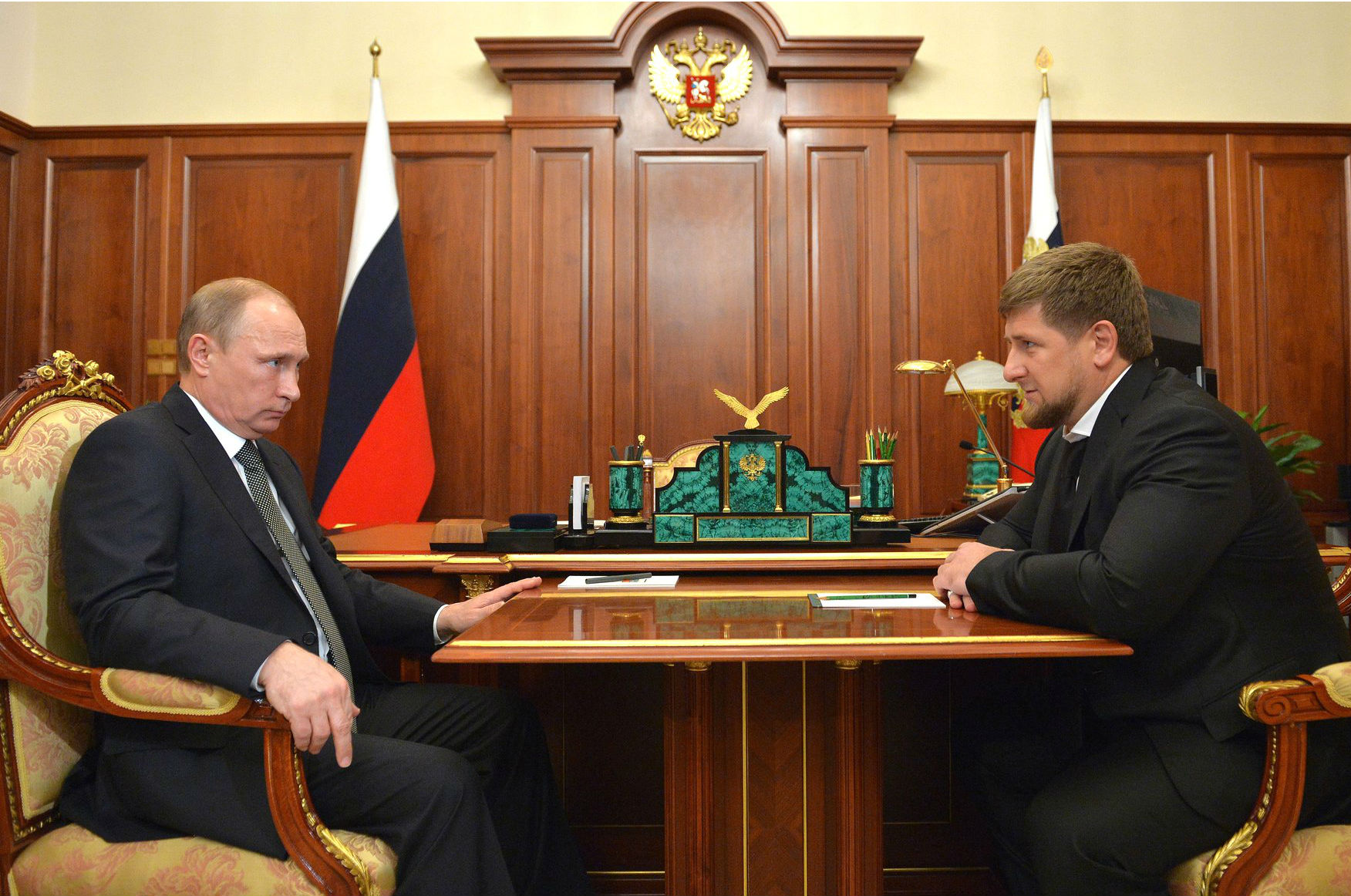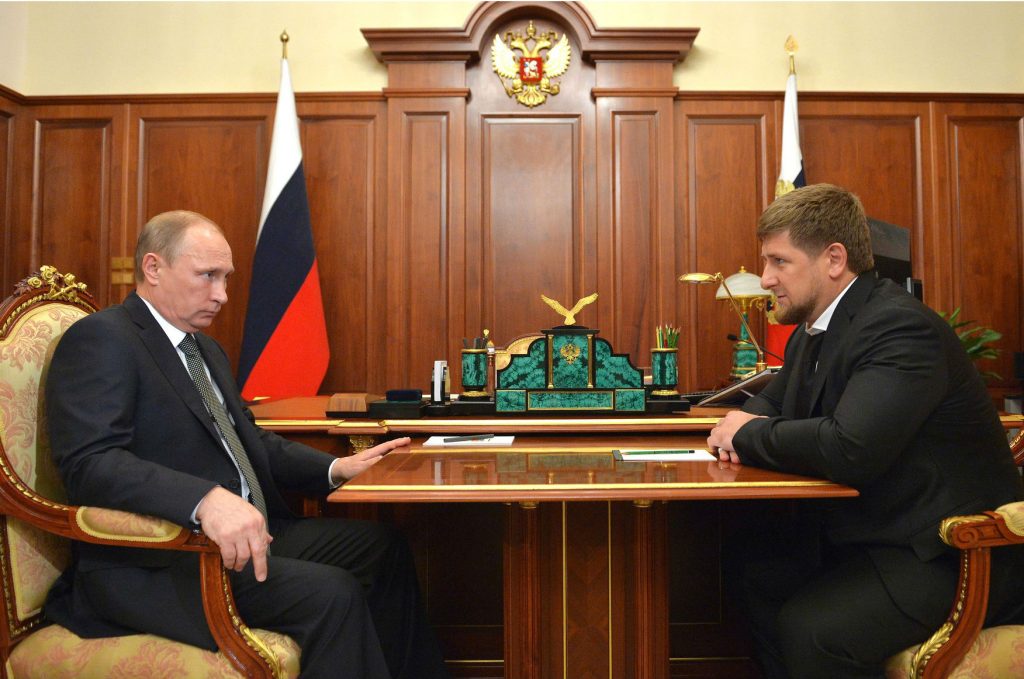 No Instagram account is more entertaining, more dumbfounding, and more terrifying than that of Chechen President Ramzan Kadyrov. On any given day, one is guaranteed to see video clips ranging from Kadyrov praying before dawn in the Akhmad Kadyrov Mosque to playing soccer at the FC Terek facilities (Kadyrov was the President of FC Terek from 2004 to 2011) to speaking to visibly shaken construction employees at delayed project sites. Kadyrov’s Instagram account is a vivid reminder that his control of Chechnya is absolute and unparalleled among the heads of state in Russia’s twenty-two republics. Recent developments in eastern Ukraine suggest that Kadyrov’s power is increasingly unrestricted; the involvement of his personal security guard—officially called the Security Service of Akhmat Kadyrov—in Crimea and the Donbas is case and point.
No Instagram account is more entertaining, more dumbfounding, and more terrifying than that of Chechen President Ramzan Kadyrov. On any given day, one is guaranteed to see video clips ranging from Kadyrov praying before dawn in the Akhmad Kadyrov Mosque to playing soccer at the FC Terek facilities (Kadyrov was the President of FC Terek from 2004 to 2011) to speaking to visibly shaken construction employees at delayed project sites. Kadyrov’s Instagram account is a vivid reminder that his control of Chechnya is absolute and unparalleled among the heads of state in Russia’s twenty-two republics. Recent developments in eastern Ukraine suggest that Kadyrov’s power is increasingly unrestricted; the involvement of his personal security guard—officially called the Security Service of Akhmat Kadyrov—in Crimea and the Donbas is case and point.
The involvement of Chechen soldiers fighting in eastern Ukraine devoutly loyal to Kadyrov has broad implications for Kremlin policy. Not only does it reinforce Moscow’s reliance on “informal paramilitary-style forces” that shift blame for controversial operations away from the Kremlin, it also provides an example as to how Russian President Vladimir Putin may use Kadyrov to solidify his own power.
Recent public statements by Kadyrov suggest that, within the context of eastern Ukraine, Chechen involvement represents the continuation of a fight between Chechens who accept Russian rule and those who have actively fought for independence since 1994. The battlefields of the Donbas represent an opportunity for exiled Chechens to fight Russia once again. As one Chechen fighter told The Guardian “This, here in Ukraine, is a war for Chechens. If we defeat Russia here, we are closer to freeing our homeland.”
Chechens have been involved in Ukraine since Russia annexed Crimea in March 2014. According to Emil Soleimanov, Associate Professor with the Department of Russian and Eastern European Studies at Charles University in Prague, Kadyrov’s soldiers were predominantly stationed in the eastern Crimean town of Feodosia, with “some detachments spotted in various other locations across the peninsula.” Much like Russian involvement, Chechen intrusion in the Donbas region has been verified through a formulaic step-by-step process starting with well-founded evidence pointing to involvement, official “I never gave the order” denials, and ending with official declarations confirming involvement after the fact.
On the battlefields of eastern Ukraine, pre-Kadyrov Chechnya is represented by approximately 100 Chechens fighting in two volunteer battalions: the Dzhokhar Dudayev battalion and the Sheikh Mansur battalion. These battalions represent the two groups Kadyrov despises the most: Islamists or what Kadyrov calls “Wahhabis” and the Chechen anti-Kadyrov/anti-Russia diaspora, described by the commander of the Chechen pro-separatist “Death” Battalion Apti Bolotkhanov as “sitting in cafes in Europe instead of rebuilding the republic.” Though both groups may talk the talk about their convictions and their strength, compared to the volunteer battalions in eastern Ukraine, their impact is minimal at best.
The recent media attention in major papers from the New York Times to The Guardian paid to Chechens fighting in Ukraine is mainly due to two reasons: first, Chechen fighters enjoy an almost mythical reputation for their heroism and toughness, and two, they represent a real subtext to the war in Ukraine. Though the Dzhokhar Dudayev and Sheikh Mansur battalion are technically pro-Ukrainian by affiliation, they remain somewhat autonomous—the Sheikh Mansur battalion is not officially integrated into the command structure of the Ukrainian army. Sheikh Mansur’s association with the Right Sector—they share a base near the frontline—is worrisome but this seems to be more out of necessity than a deep-seeded relationship.
Recent reports suggest that Kadyrov’s incursion in eastern Ukraine is winding down. On May 8, 2015, former Prime Minister of the Chechen Republic of Ichkeria Akhmed Zakayev told the Kyiv Post that forces loyal to Kadyrov had been pulled out of eastern Ukraine following an incident in which forty Chechen fighters were killed after Russian-backed separatist leader Alexander Zakharchenko “refused to compromise with Ukrainian forces.” In an interview on July 31, 2015, Kadyrov confirmed that all volunteer Chechen fighters had left the Donbas, while also stating that any Chechens fighting on the side of pro-Ukrainian forces were “drug addicts” and “alcoholics.”
Kadyrov has exploited the war in eastern Ukraine for personal gain. By sending fighters to the Donbas, he is able to simultaneously show any opponents in Chechnya and, more importantly, opponents within Putin’s administration that he will be difficult to depose, while also continuing to redefine Chechen identity after the Second Chechen War. From the perspective of Putin, Kadyrov’s activities in eastern Ukraine reinforce his role as a loyal servant and shift blame for controversial operations away from the Kremlin. The worrying concern for the Kremlin should be that left uncontrolled, Kadyrov’s lust for power may soon prove unmanageable.
Ruben Gzirian is an Eastern Europe analyst in Washington, DC.
Image: Russian President Vladimir Putin held a working meeting with Head of the Chechen Republic Ramzan Kadyrov December 4, 2014 in Moscow. Not only does Moscow’s reliance on “informal paramilitary-style forces” including Chechen forces shift blame for controversial operations in Ukraine away from the Kremlin, it also provides an example as to how Putin may use Kadyrov to solidify his own power. Credit: Kremlin.ru
